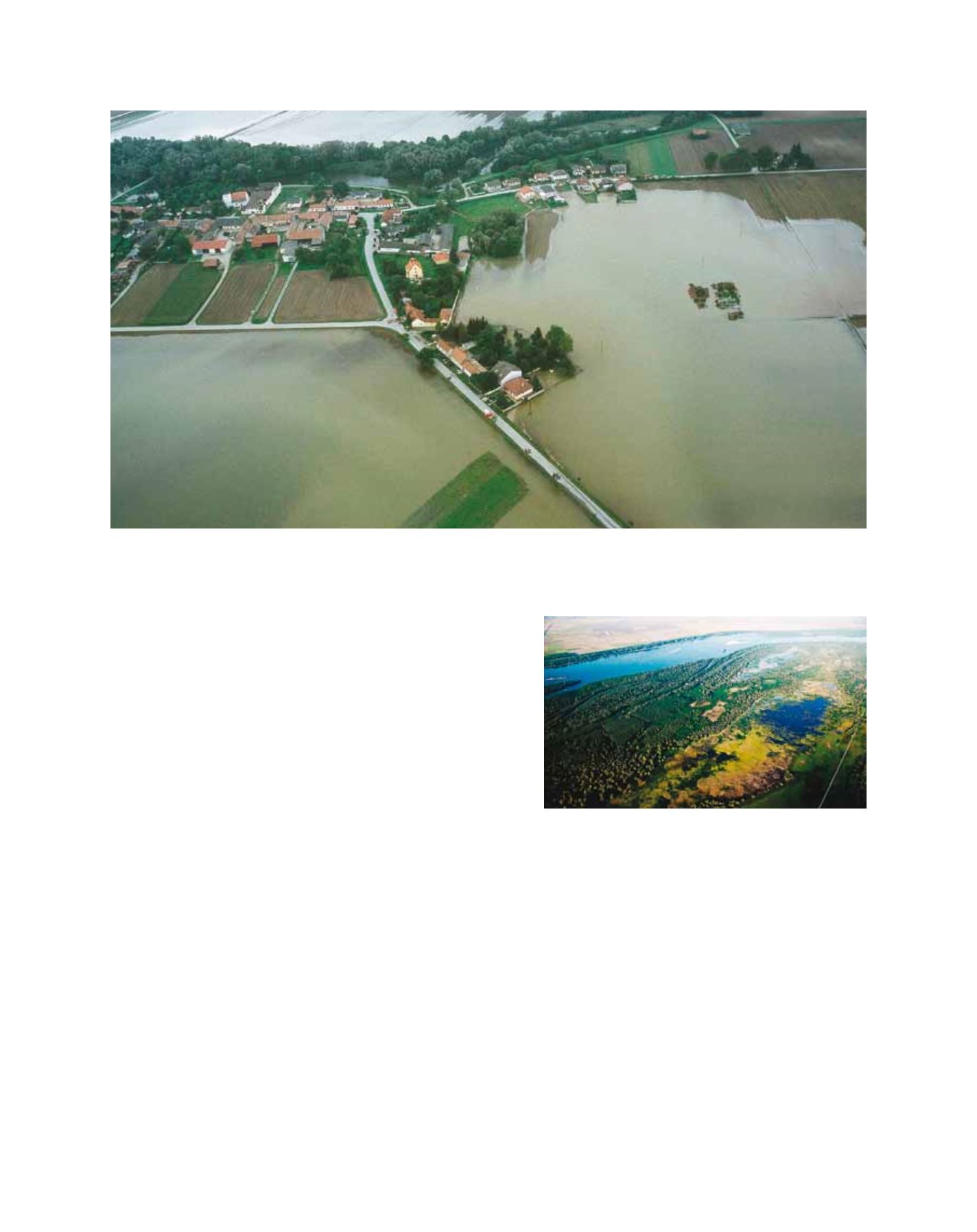

The 2nd DRB and 1st Danube Flood Risk Management
Plan, due by 2015 and to be updated according to the six-
year planning cycles, will be the key tools for adapting the
DRB to climate change. The adaptation strategy will there-
fore not include a programme of measures since the required
adaptation measures will be discussed and enshrined in the
forthcoming management plans. ICPDR will focus in this
process on the issues that are relevant for the basin-wide scale.
For further information please get in contact with the
ICPDR secretariat via
www.icpdr.orgPossible adaptation measures
The Danube study includes a summary of possible adaptation
measures for each investigated impact field, which can be ordered
according to different categories (for example, based on the United
Nations Economic Commission for Europe Guidance on Water and
Adaptation to Climate Change).
9
Possible adaptation measures can include preparatory measures
for adaptation (e.g. intensified monitoring activities to assess climate
change impacts or forecasting and warning systems, further research
to close knowledge gaps), ecosystem-based measures (e.g. imple-
mentation of a green infrastructure to connect biogeographic regions
and habitats, protection and restoration of water-retention areas),
behavioural/managerial measures (including support for education,
capacity-building and knowledge transfer or promotion of water-
saving behaviour), technological measures (e.g. improvement of
infrastructure such as more efficient irrigation systems in agricul-
ture or the construction and modification of dams and reservoirs
for different purposes like drinking water supply), as well as policy
approaches (like support of an institutional framework to coordinate
activities e.g. on flood risk management).
Developing a climate adaptation strategy
The Danube study was an important step towards adapting the DRB
to climate change. By addressing the whole basin, it helps to generate
a joint understanding of the issues and identify the required trans-
boundary actions. The ICPDR Strategy on Adaptation to Climate
Change is currently being developed, to be finalized by the end of
2012. The strategy should guide the way to fully integrate climate
adaptation in the work of ICPDR by making best use of existing
structures and instruments, in particular the WFD and EFD.
[
] 100
W
ater
Although no clear picture can be provided at the current stage on expected changes in flood magnitude and frequencies, focusing on integrated flood risk
management with the implementation of the EU Floods Directive on Danube Basin-wide scale, is considered as a no-regret measure for adaptation to climate
change and the protection of the local population
Image: F. Kovacs
Green infrastructure like the extension of natural areas and the (re-)
connection of wetlands and floodplains to the main river can provide
various benefits for adaptation to climate change, creating win-win solutions
like the reduction of flood peaks, increased robustness against low flow
situations and drought spells, beside the protection and maintenance of
the natural ecosystem
Image: Alexander Ivanov
















